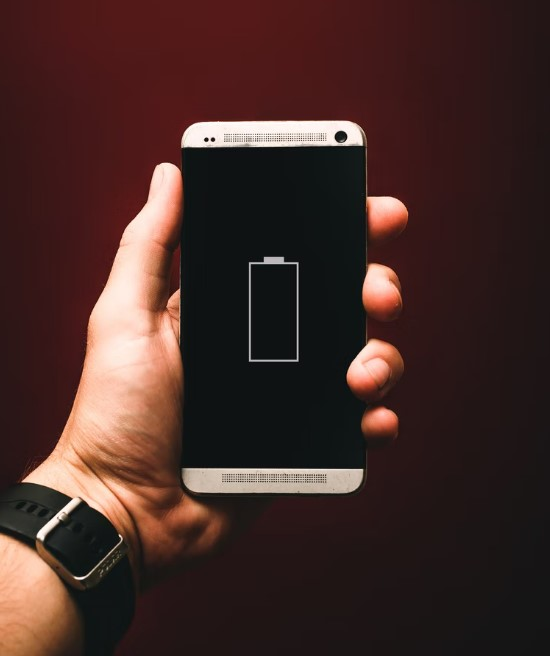What does mAh mean for batteries?

The milliampere-hour (mAh) is a unit of electric charge that is commonly used to describe a battery capacity for smaller batteries such as mobile phones and digital cameras. (Higher mAh batteries are designated in ampere-hours; 1 Ah = 1000 mAh.) The capacity of a battery can be calculated by multiplying the discharge current by the time the battery can give that much current.
Before the invention of electric generators and electrical grids at the end of the nineteenth century, batteries were the primary source of electricity. From early scientific studies to the rise of telegraphs and telephones, advancements in battery technology facilitated significant electrical innovations, eventually leading to portable computers, mobile phones, electric cars, and a variety of other electrical gadgets.
The life cycle of batteries is an important classification. “Primary” batteries can provide current as soon as they are built, but they cannot be refilled electrically once the active elements have been exhausted. The invention of the lead-acid battery and subsequent “secondary” or recharge type batteries allowed energy to be restored to the cell, allowing permanently built cells to live longer.
The creation of this particular battery made possible for the creation of portable electronic gadgets, ranging from bright flashlights to mobile phone, was made possible to power a device by the introduction of nickel and lithium-based batteries in the latter half of the twentieth century. Grid energy storage, which helps to stabilize electric power distribution networks, has some applications for very large stationary batteries.
Understanding what does mAh mean for battery capacity? higher mAh batteries? rechargeable battery or rechargeable batteries?

One widespread misunderstanding is that we can simply measure battery capacity by the capacity of a smartphone or tablet to determine how many times we can charge the smartphone or tablet with this power bank. That, however, is not the correct procedure.
An Ampere-Hour or Amp hour (mAh) is a measure of electric charge that indicates a battery’s capacity, whereas a Watt Hour or Watt hours (Wh) is a measure of electric energy.
Below is the following formula:

Watt-Hour = Ampere-Hour x Voltage
A battery with a capacity of 20000 mAh can deliver a total charge of 20000 mAh at a certain voltage. The majority of the charge in a Lithium-ion battery is exchanged at roughly 3.7V. As a result, the total energy of a 20000 mAh battery is 20000 mAh x 3.7V = 74000mWh, or around 74Wh.
mAh in rechargeable batteries

This battery life image, in the case of rechargeable batteries, indicates the amount of energy a battery can hold as well as the amount of time it can power a device before needing to be recharged.
The mAh usage will vary depending on the battery type. In most circumstances, though, one rule applies the larger the mAh rating of a battery, the more electrical energy it can store. As a result, a greater mAh rechargeable battery can run a device for a longer period.
mAh in smartphone battery life

The average capacity of smartphone batteries is currently somewhat more than 3000mAh, with the most common capacities ranging from 3000 to 5000mAh.
In comparison to a few years ago, manufacturers have increased capacity slightly. The previous models, for example, had a 1500mAh lithium-ion battery before the smartphones were released.
The Redmi Note 9 Pro, for example, has a 5000mAh battery that may last up to a day without needing to be recharged. Some smartphones, such as the Samsung Galaxy M20, are equipped with 6000mAh batteries.
Higher mAh equals longer phone use?
Higher mAh batteries survive longer than lower mAh batteries when used in the same way, however this does not always imply a better battery.
The milliampere hour is a measurement unit for battery capacity. It is sometimes referred to as the size of a battery’s fuel tank because it measures the total amount of energy a battery can provide in an hour when completely charged.
Factors that Influence Usage
The amount of time your phone’s battery lasts is mostly determined by how you use it. The more features you use on your phone at the same time, the more current it consumes, the faster the battery’s capacity depletes.
This is why utilizing mobile data, WiFi, watching videos or playing demanding games on your phone quickly depletes the battery. As a result, a smartphone device battery life with a large capacity may endure for years.
Does the number of milliamperes (mAh) affect battery lifespan?
Rechargeable batteries can only be charged so many times before they start to wear out. This limit is estimated to be between 500 and 600 times on average, according to certain sources. Cycle life is the number of charge-discharge cycles. As a result, battery consumption patterns are a factor that influences the battery’s average life.
In conclusion, the mAh in batteries refers to a capacity measurement or a battery can store. The longer the battery life or more mAh is, the larger the mAh value is.
Nevertheless, this is not the only factor to consider. Battery life is determined by usage patterns and the device’s current output, while longevity is defined by the amount of charge-discharge cycles encountered by devices.
Feel free to visit our YouTube channel for additional support and troubleshooting guides on various devices